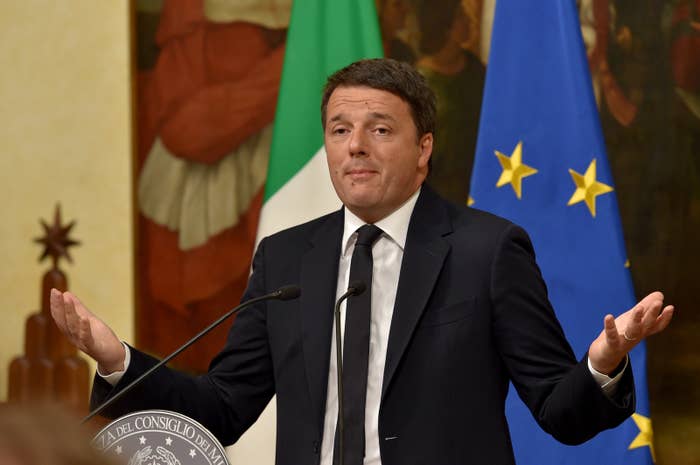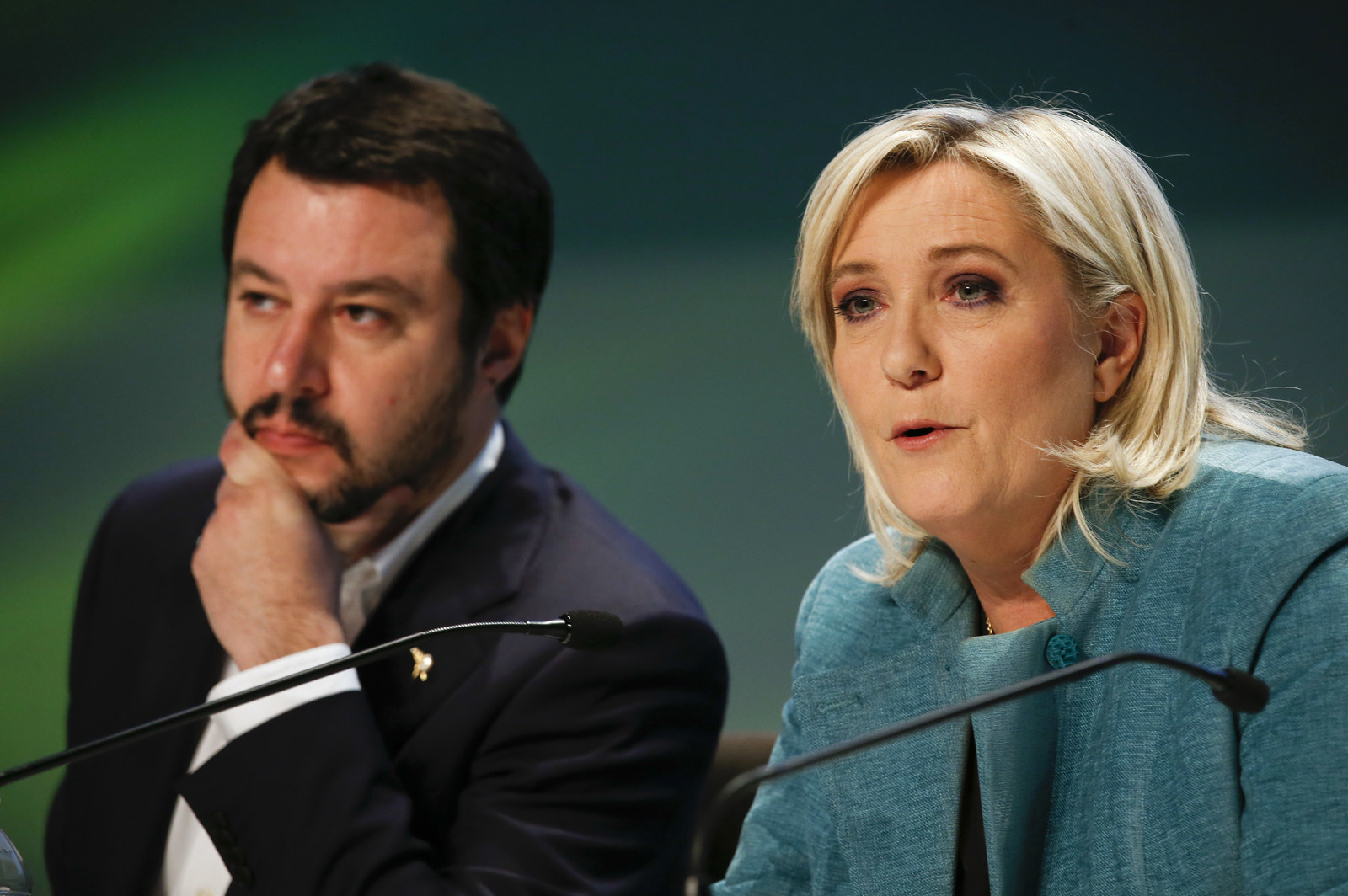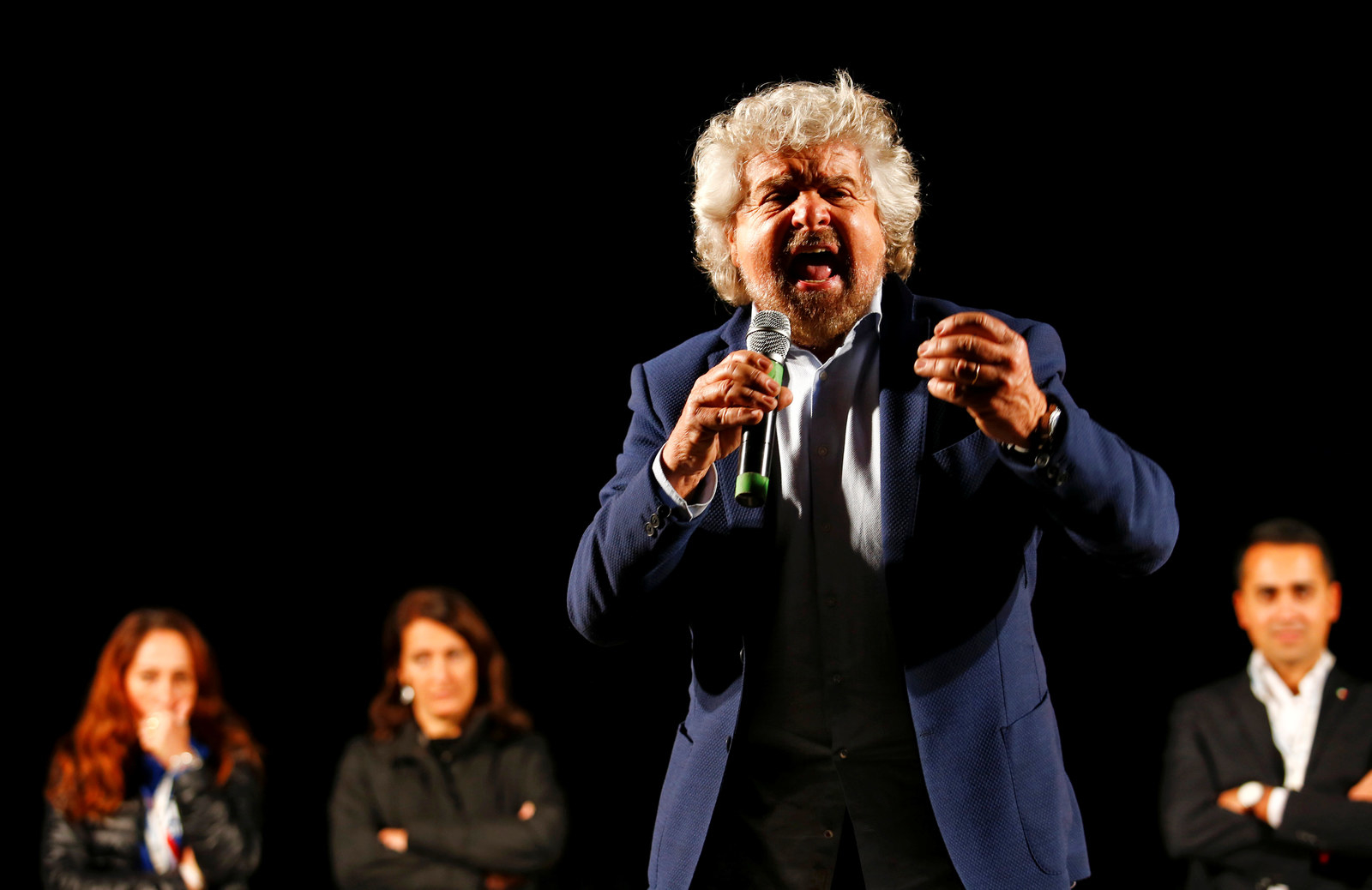
Prime Minister Matteo Renzi of Italy resigned on Sunday after a series of constitutional reforms he had proposed were rejected in a national referendum. The No side won with 59% of the vote.
So what was the referendum about?
Some commentators have likened the vote to the UK's Brexit referendum. But Italy's referendum was not about the European Union (despite Nigel Farage's efforts to make everything about Brexit these days).
Under Italy's parliamentary system, its two chambers have equal powers. On the surface, the vote was about a set of constitutional reforms that would have seen the Italian Senate no longer directly elected. Instead, its members would have come from Italy's regions and cities. The reforms would have also cut the Senate's seats by a third.
Renzi felt the changes were necessary to implement deeper reforms because of the stalemate embedded in the existing system — and he staked his premiership on the reforms, saying he would resign if they failed to pass.
In reality, the referendum outcome appears to be about more than just the proposed reforms. Exit poll data shows the vote was strongly split along party lines:
Circa 1/4 degli elettori PD ha votato NO #exitpoll #RaiReferendum #Referendum #ReferendumCostituzionale Dettagli -… https://t.co/fl7H7SYRP7
All the main opposition parties — the anti-establishment and populist Five Star Movement (M5S), the right-wing Northern League (Lega), and Silvio Berlusconi's Forza Italia (FI) — were against the reforms.
Lega leader Matteo Salvini linked the result to his party, framing it as a right-wing resurgence in keeping with the rise of Donald Trump and Marine Le Pen — while also taking the opportunity to praise Vladimir Putin.
Viva Trump, viva Putin, viva la Le Pen e viva la Lega! https://t.co/r8FXztp9Am
On the ground, the No campaigns themselves were driven primarily by the Northern League and the M5S. Both their campaign arguments went somewhat beyond the constitutional merits of the proposed reforms, focusing on issues such as immigration and the banking crisis.
The proposals were also opposed by parts of the left flank of Renzi's Democratic Party (PD) and several former PD leaders, such as former Prime Minister Massimo D'Alema.
Did Renzi really have to resign?
Renzi was under no obligation to step aside. And critics in Italy argue he should have never promised to stand down in the first place, because it turned the referendum into a vote about him. However, it is difficult to foresee a scenario whereby most of the reforms' opponents would not have called on him to resign anyway — or made the campaign personal.
What happens next?
In terms of formalities, the next steps are quite straightforward: Renzi will tender his resignation to Italian President Sergio Mattarella on Monday. The president will then consult with parliamentary parties before appointing a new prime minister.
Renzi's coalition is still a majority in parliament so once agreement is reached on a name, which could also be a technocrat or Renzi himself (although unlikely), a new government can be formed.

Is Italy going to have to hold a snap election?
In the wake of Sunday’s result, Northern League leader Salvini and M5S chief Beppe Grillo both called for immediate elections.
On his blog, Grillo said the vote could be held with an adjusted version of the existing electoral law. Until recently, Grillo and the M5S opposed this law, describing it on multiple occasions as fascist.
Still, any snap election would be difficult because the electoral bill passed by the outgoing administration was dependent, in its current form, on the referendum’s approval. One of the first tasks of a new government is likely to be a new voting law.
Most other opponents of the constitutional reforms took a more cautious approach, avoiding any talk of an early vote.
Any new government will also be tasked with passing a package of stability measures, and will also have to to deal with Italy’s ongoing banking crisis and the burden of the banks’ bad debt and non-performing loans.
But what about in the longer term?
Regardless of who forms a new government in the coming days or weeks, Italians will be eventually called to the polls to elect a new parliament.
Although a lot will depend on what electoral system is adopted, the most recent polls show that any election will likely be a three-horse race between the center-left Democratic Party (PD), the M5S, and the center-right and right-wing bloc of parties that includes the Northern League.
Political instability is not a novelty in Italy. The country has had more than 60 governments since the end of the Second World War, and whoever succeeds Renzi will become the sixth Italian prime minister since Angela Merkel took office in Germany.
However, there is an important difference now compared to the recent past: Among the bloc of coalition parties on the right (those that supported successive Berlusconi governments), the far-right Lega is now the largest party.
And unlike in other western European countries where there tends to be one viable populist alternative to the parties of government, in the M5S or in a Lega-led coalition, Italy potentially has two.

Both the M5S and the Lega have pledged to hold a referendum on the euro (such a vote would require a two-thirds majority in parliament because Italy's constitution forbids votes on international treaties).
On the center-left, it is unclear whether Renzi will lead his party into the next election.
Voters in areas with higher unemployment and younger voters both rejected Sunday's referendum on average in greater proportions than the nationwide result. The next election will take place against the backdrop of a still-fragile economy and a relatively high unemployment rate, especially among young people.
